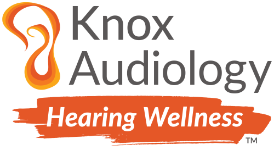Hearing Assessments for Children

Hearing is a fundamental aspect of a child’s development, shaping their ability to communicate, learn, and interact with the world. At Knox Audiology, we provide a comprehensive range of paediatric hearing assessments, each tailored to different age groups, which enable us to better understand their role in a child’s auditory development journey. These assessments are essential tools for monitoring and addressing hearing issues in children, ensuring they have the best possible start in life.
Neonatal Auditory Brainstem Response
Age: Up to 4 months
Infants up to 4 months of age undergo the baby Auditory Brainstem Response (ABR) test, a non-invasive procedure utilizing electrodes (recording pads to monitor brain activity) to assess the transmission of sound to the baby’s brainstem. This test records the infant’s brain’s reaction to sounds through waveforms displayed on a computer screen. To successfully conduct the test, the baby must be in a state of sleep, making it advisable to schedule the appointment around the baby’s nap times.
Visual Reinforcement Audiometry
Age: 9 months to 3 years
Visual Reinforcement Audiometry (VRA) is a hearing evaluation method that relies on the child’s behavioural responses. In this test, children between the ages of 9 months and 3 years, or older (in cases of premature birth, based on corrected age), are engaged in looking towards a visual stimulus, such as a toy, in response to auditory stimuli. VRA is only suitable for children with adequate vision to perceive the reinforcing stimuli and enough control over their trunk and neck to voluntarily turn towards the reinforcement.
The child’s cooperation is pivotal for the effectiveness of a VRA session. To ensure a successful assessment, it’s important to minimize potential sources of discomfort or distress whenever feasible. It’s generally advisable to avoid appointment times that coincide with the child’s nap times to optimize their comfort and readiness for the session.
For children with visual impairments or significant developmental delays they can be referred to either the Royal Children’s Hospital or Monash Children’s Hospital for the hearing assessment.
Play Audiometry
Age: 3 years and above
Play Audiometry is a modified version of the conventional pure tone testing method in which a child is encouraged to participate actively through play. During this assessment, the child is conditioned to respond to auditory stimuli by engaging in a playful activity, such as placing a toy in a container or fitting a peg into a pegboard, in response to the sounds they hear through headphones. This approach is designed to make the hearing evaluation more interactive and engaging for children.
Speech Audiometry
Age: 3 years and above
Speech audiometry is another essential component of our assessments, serving to validate the results obtained on the audiogram. When assessing children aged 3 to 5 years, speech audiometry involves the use of picture cards or a selection of toys. The child is prompted to select the corresponding card or toy when asked to at varying levels of modulated live voice.
For adults, speech audiometry typically involves the repetition of a series of words in each ear while wearing headphones. These words are frequently delivered at different levels, according to the individual’s hearing thresholds. This process enables us to evaluate their capacity to recognize spoken words and aids in determining their benefit from the use of hearing aids.
Auditory Processing Screening and Assessments
Age: 5 years and above
Auditory processing disorder (APD) is characterized by difficulties in processing auditory information despite having normal hearing. Common challenges include trouble with background noise, poor listening skills, misunderstanding spoken messages, following oral instructions, and maintaining attention. In children, APD can impact reading, writing, spelling, overall learning abilities and difficulty following instructions.
The assessment typically involves assessing sentence/word recognition abilities in the presence of competing background multi-talker speech noise along with other subtests that assess various auditory processing skills.
Pure Tone Audiometry
Age: Older children and adults
Pure tone audiometry is a conventional method that utilizes a series of tones to establish the lowest level of sound an individual can detect at different frequencies in each ear. This assessment is subjective and behavioural in nature, relying on the individual’s response to determine their hearing thresholds. Pure tone audiometry is valuable for determining both the degree and type of hearing loss present in each ear. Moreover, it assists in determining whether a referral to an Ear, Nose, and Throat Specialist is warranted, helping guide the appropriate course of action for further evaluation and potential treatment.
